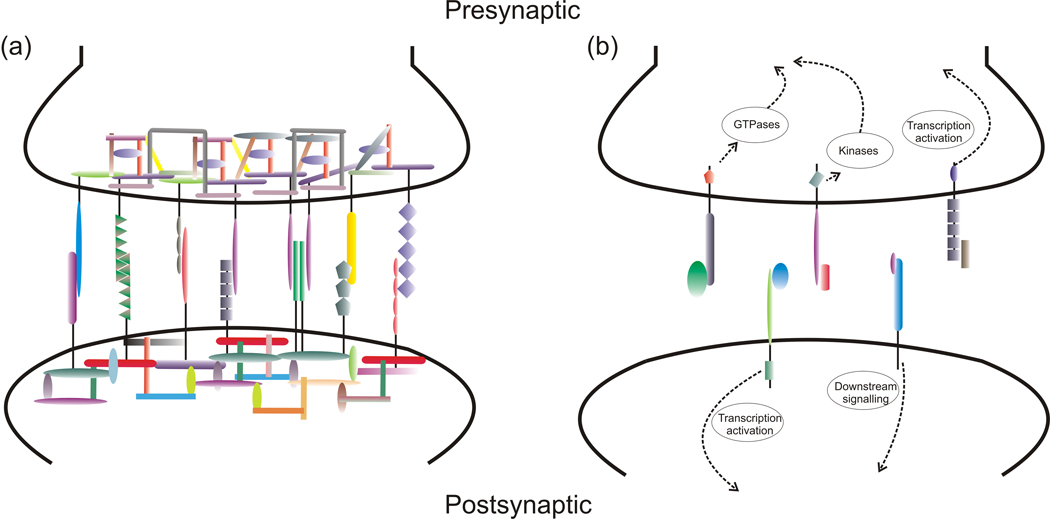Figure 2.
Different initial mechanisms by which synaptogenic molecules promote synaptic differentiation. (a) Many synaptogenic adhesion complexes function primarily by nucleating a dynamic network of local high affinity protein-protein interactions in which each component interacts with multiple other components. (b) Many of the secreted factors directly activate signal transduction cascades involving kinases and GTPases, and perhaps regulate transcription. However, there are no strict boundaries, synaptogenic adhesion proteins can be kinases (e.g. Ephs) and secreted factors can act by local aggregation (e.g. NP1/2). These initial mechanisms are likely to converge on common downstream pathways mediating aspects of synaptic differentiation.

